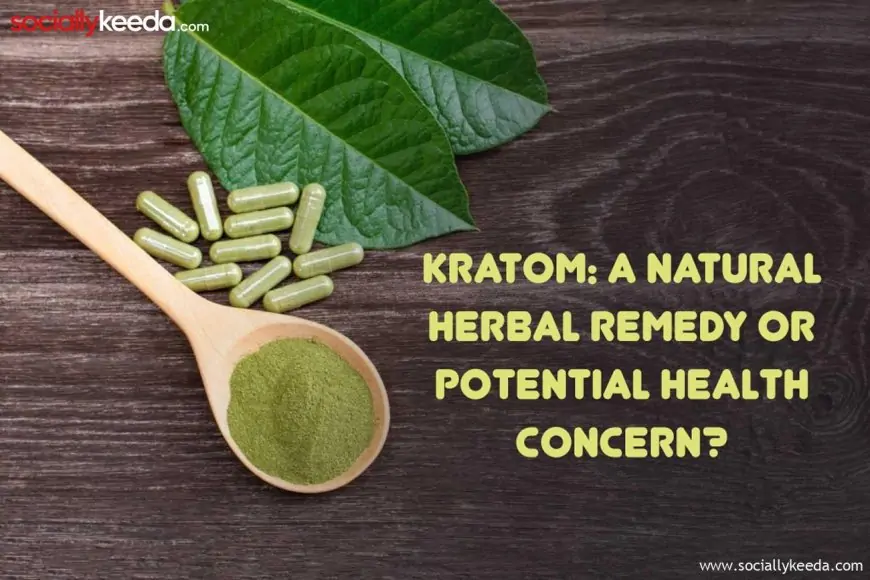Natural remedies have been used for centuries all around the world to provide relief from various ailments. One natural remedy that has recently piqued the interest of many is Kratom. Often promoted as a herbal supplement or miracle cure-all, this plant native to Southeast Asia has been purported to treat anything from chronic pain and anxiety to aiding in drug addiction treatment and management. But while its anecdotal uses are plentiful, does Kratom offer legitimate medicinal value?
In this article, we explore both sides of the discussion surrounding Kratom to better understand whether it can be classified as a viable therapeutic option—or if further study is needed before any scientific recommendations can be made.
What is Kratom and its traditional uses?

Kratom is a natural plant that belongs to the same family as coffee and is native to Southeast Asia. It has a long and rich history of traditional use in this region, dating back centuries. The leaves of the Kratom plant are known to have powerful medicinal properties that have been used to treat various ailments, such as chronic pain, fatigue, and diarrhea.
The locals have traditionally consumed Kratom leaves for their stimulant and sedative effects. While Kratom has recently gained global popularity, it is essential to understand its traditional uses and potential benefits to appreciate its significance. The traditional use of Kratom is a testament to its effectiveness and potency as a natural remedy.
The potential benefits of Kratom for specific medical conditions
Kratom has been studied for its potential usefulness in relieving certain medical conditions. Research suggests that the active compounds found in Kratom, specifically mitragynine and 7-hydroxymitragynine, interact with specific receptors in the brain to produce beneficial effects.
For example, studies have indicated that these compounds may benefit those suffering from chronic pain as they can help reduce inflammation and improve mobility. In addition, some research has found that Kratom can help with opioid addiction by reducing cravings and aiding withdrawal symptoms. Red Kratom effects are purported to be more stimulating, providing an extra energy boost.
The potential risks associated with taking Kratom
Despite its potential benefits, there is still much debate surrounding the safety of taking Kratom. While it is natural and has been used traditionally for centuries, some experts believe that the active compounds in Kratom may not be safe for human consumption. It is also important to note that most of these studies have been conducted on animals and not humans, meaning more research needs to be done before any firm conclusions can be made on its safety.
Kratom is still unregulated in many countries, making it difficult to determine reliable sources and quality control standards. Additionally, taking too much Kratom can lead to side effects such as nausea, headaches, and dizziness. Therefore, consulting with a healthcare provider before incorporating Kratom into one's health routine is essential.
Current scientific research on the safety and efficacy of Kratom
Currently, limited scientific evidence supports the safety and efficacy of taking Kratom. Most studies have been done on animals, making it difficult to draw firm conclusions about its potential benefits and risks for humans. Additionally, the lack of regulation in many countries makes it difficult to determine reliable sources and quality control standards.
It is also important to note that most studies on Kratom have focused on its potential use as an opioid substitute or aid in opioid addiction treatment. Further research must be done before any scientific recommendations can be made regarding its use for other conditions, such as chronic pain or anxiety.
Potential interactions between Kratom and other substances or medications
As with any herbal supplement, awareness of potential interactions between Kratom and other substances or medications is vital. For example, Kratom can interact with opioids and other drugs, increasing the risk of side effects such as dizziness, nausea, confusion, and fatigue. Talking to a healthcare provider before taking this natural remedy if you're pregnant or nursing is also essential.
Additionally, as Kratom has sedative effects in higher doses, one should be careful not to take it with alcohol or certain prescription medications that may have similar effects. In short, it is essential to take the time to educate yourself about Kratom before deciding whether it's the right fit for your health needs.
Who should not take Kratom, and in what form should it be taken
Kratom should not be taken by those who are pregnant, breastfeeding, or taking certain medications. Additionally, it is vital to understand the potential side effects of taking Kratom and be aware of any interactions with other substances.
When taken in moderation, Kratom can be beneficial for various medical conditions. It is usually available in capsules, tincture, or powder form and can be brewed into tea or added to food items for consumption. The dosage varies depending on the individual's needs, and it is always advisable to talk to your healthcare provider before incorporating this natural remedy into one's health routine.
In conclusion
Much debate surrounds the potential benefits and risks of taking Kratom. While the traditional uses of Kratom suggest its effectiveness in treating certain medical conditions, further scientific research is needed to determine if it is a safe and reliable therapeutic option—or if further study is needed before any scientific recommendations can be made.










